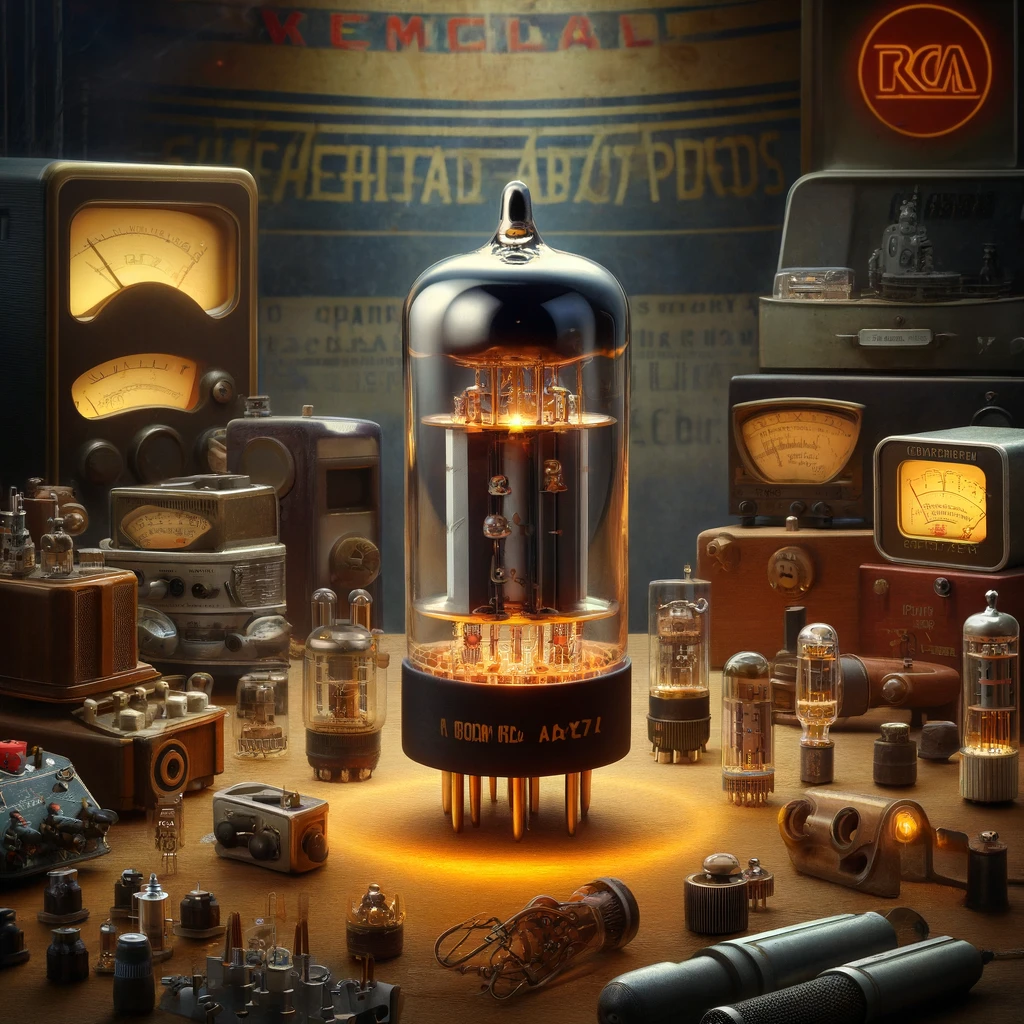12AX7 Tube Equivalents
Technical information, substitutions, notes.
The 12AX7 is a miniature dual triode vacuum tube, also known as an electron valve, that has played a significant role in the development of electronic equipment, particularly in audio applications. Introduced in the late 1940s by RCA (Radio Corporation of America), the 12AX7 was designed for use in high-fidelity audio amplifiers, microphone preamplifiers, guitar amplifiers, and as a phase inverter in multistage amplifiers.
http://milbert.com/articles#12ax7

Development and Characteristics
The 12AX7 was developed to meet the demand for more compact and efficient vacuum tubes that could provide high gain while operating at lower voltages, a requirement of the burgeoning consumer electronics market post-World War II. Its design features two triodes in a single glass envelope, making it versatile and economical for various applications. The tube operates with a filament voltage of 6.3V or 12.6V (in the 12AX7A variant), and it is known for its high voltage gain, making it ideal for audio preamplification stages.
Widespread Adoption
The 12AX7 quickly became popular among manufacturers of audio equipment for its reliability, high gain, and rich harmonic distortion when overdriven, a characteristic particularly cherished in guitar amplifiers. Its ability to produce a warm, smooth sound made it a staple in the design of tube amplifiers from the 1950s onwards. Manufacturers like Fender, Vox, Marshall, and many others have used the 12AX7 extensively, contributing to the distinctive sound of electric guitars in rock and roll, blues, and other music genres.
Durability and Longevity
One of the reasons for the 12AX7’s enduring popularity is its durability. Many tubes from the original production runs in the 1950s and 1960s are still in use today, testament to the robust design and manufacturing quality. The tube’s longevity and sonic characteristics have also contributed to a vibrant market for vintage audio equipment, with enthusiasts seeking out original 12AX7 tubes for their superior sound quality.
Modern Usage and Legacy
Despite the advent of solid-state technology, the 12AX7 remains in production and widespread use today, a rarity among vacuum tubes. Modern production has shifted to countries like Russia, Slovakia, and China, with several companies manufacturing versions of the 12AX7 for use in new audio equipment and for replacements in vintage gear. Its continued popularity underscores the tube’s significant impact on the audio industry and its contribution to the sound of modern music.
The 12AX7’s history reflects broader trends in technology, music, and culture, illustrating how a single component can shape the sound of an era and remain relevant decades after its introduction. Its legacy is a testament to the enduring appeal of vacuum tube technology in an age dominated by digital and solid-state devices, serving as a bridge between the early days of electronic innovation and contemporary music production.